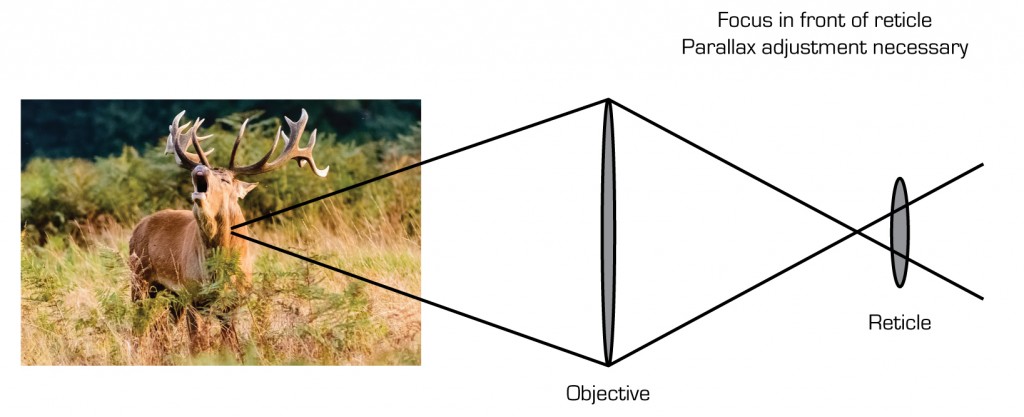What Is Parallax And How Can I Tell If I Have a Problem With It?
- Posted By Jeff Byrnes
- Blog
It’s a common term used when describing scopes, but how well do you understand what parallax is? Even more important, is it something you should worry about? The answer to the second question is a definitive yes, if you’re a long-range hunter or shooter. Let’s explore more on what this term means and how to figure out if it’s a problem for you.
Parallax is a situation where the focal plane in your scope is offset from the reticle. Two things get focused in your scope: the reticle and the image itself. If they’re not focused to the same plane, you have a parallax problem, an optical illusion that has to be corrected or you won’t be able to shoot accurately.
It is very important that you understand that correcting for parallax does not change the focus of the reticle or the focus of the image. Instead, it moves the planes at which these two objects are in focus so that they are the same (so they’re coincident.) You can tell that you have a parallax problem if you shift your gaze slightly and the reticle appears to change position.

In the illustration above, the point where the focal lines cross and form an X is the focal plane for the target image. You can see that it is in front of the reticle, which means you have a parallax problem. When the angle at which you are viewing the image through the scope changes, so will the reticle position relative to the target image.

In this illustration, you can see that the focal plane for the target image and the reticle are the same, so you don’t have to adjust the parallax.
The problem with parallax comes in when you don’t have a direct line of sight to your target. Since the reticle appears to move when you shift your gaze, you cannot be assured of a shot that will go where you think it should go. Correcting for parallax removes that concern, so you can shift your gaze and the reticle will stay right where you think it should be. As a result, if your scope is properly sighted in, your shot should go exactly where you want it to go.
There’s an explanation for parallax, why it’s a problem, and how to tell if it’s a problem. In my next article, I’ll talk about how to correct for it.
This post was written by Jeff Byrnes
Hi there! I’m Jeff, an avid outdoorsman and hunter who really likes exploring new technology. I’m especially into hunting optics, which is why I’m writing these reviews! I hope you find my articles helpful in your own shooting and hunting.








